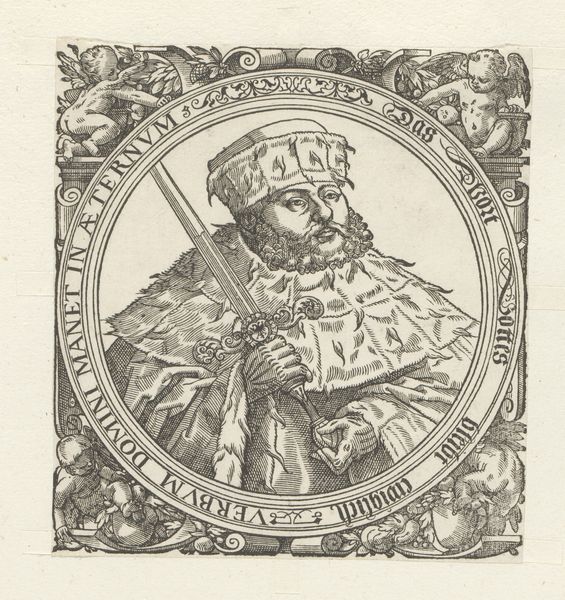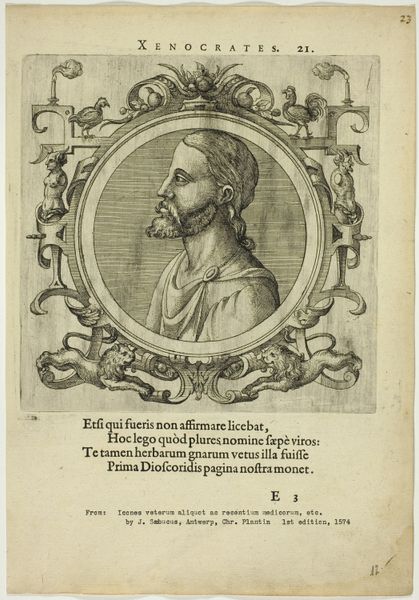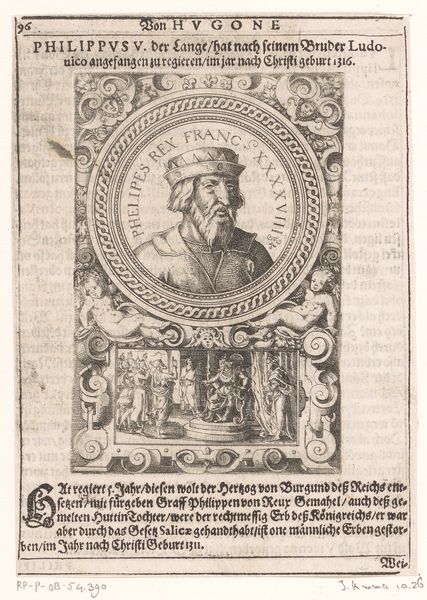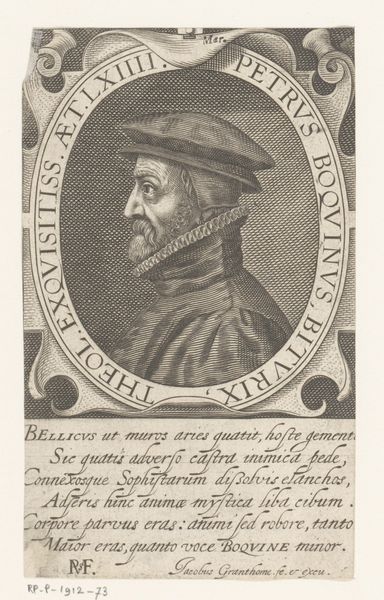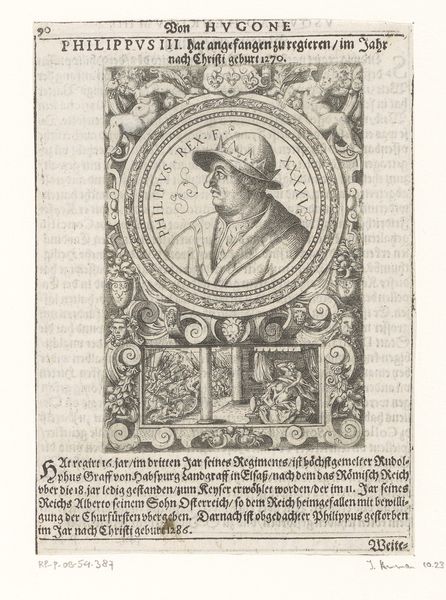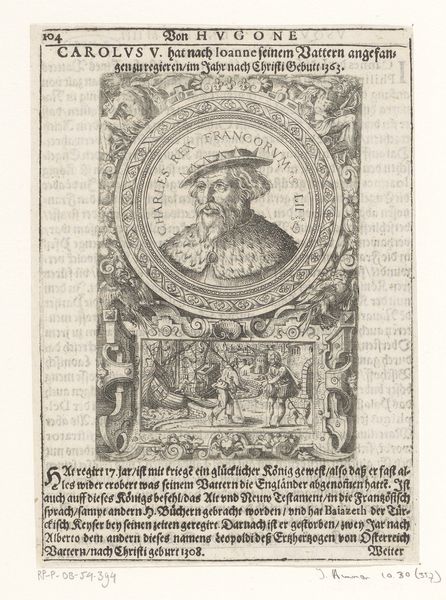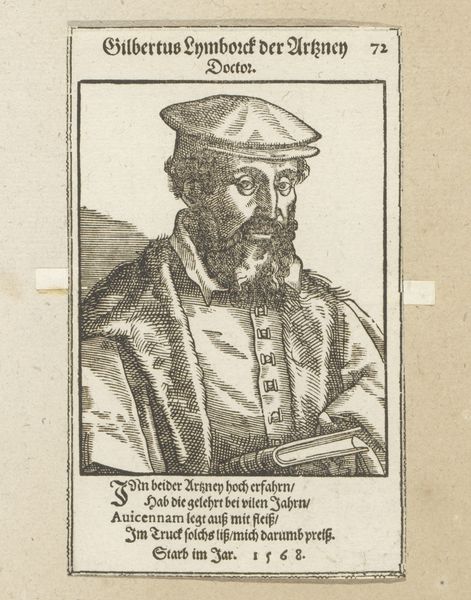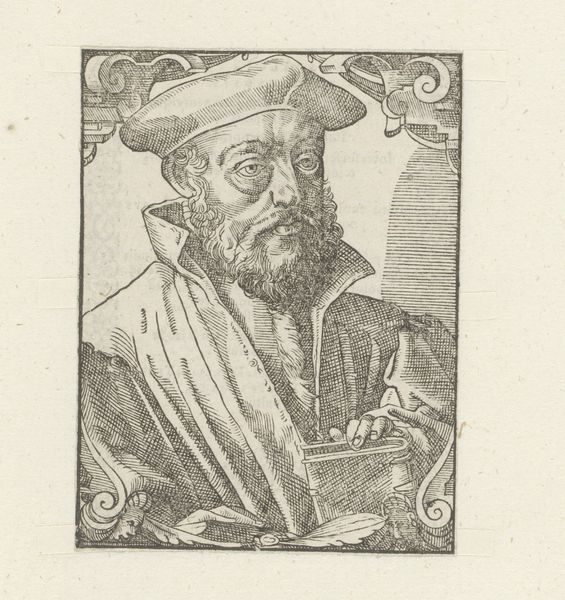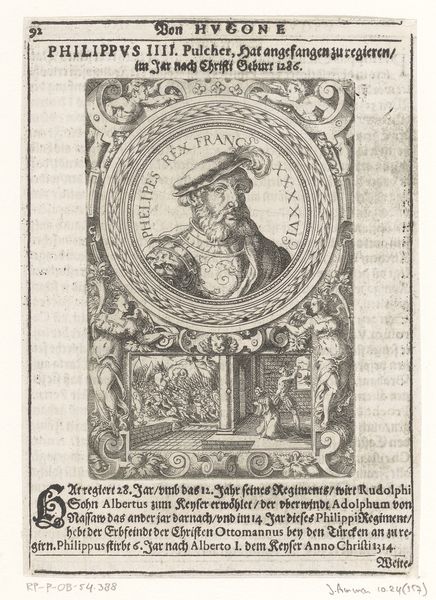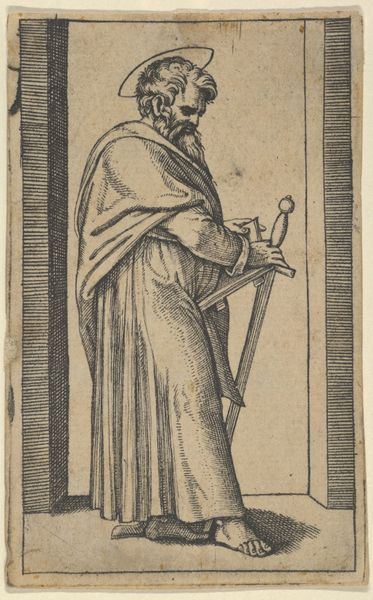
drawing, print, ink, engraving
#
portrait
#
drawing
# print
#
pen illustration
#
old engraving style
#
11_renaissance
#
ink
#
northern-renaissance
#
engraving
Dimensions: height 139 mm, width 103 mm
Copyright: Rijks Museum: Open Domain
Albrecht Durer rendered this portrait of Emperor Maximilian I using woodcut, employing line to create both form and texture. At first glance, one is struck by the portrait's framing, an inscribed circle set within a rectangle, each form contributing to the visual hierarchy. The composition centers on Maximilian's profile, meticulously detailed with hatched lines that define his features and attire. The inscription surrounding the portrait isn't merely a caption, it’s an integral part of the visual structure. It guides the eye around the circle, reinforcing the image's symbolic importance. The black ink against the stark white paper creates a dramatic contrast, typical of Durer's printmaking. Notice the use of varying line weights. Thicker lines create the main contours, while finer lines add shading and depth. This technique not only enhances the portrait's realism, but also adds a textural quality that invites closer inspection. Ultimately, the artwork is a cultural artifact, one which reflects Durer's technical skill, and the complex interplay between image and text in Renaissance art.
Comments
No comments
Be the first to comment and join the conversation on the ultimate creative platform.
